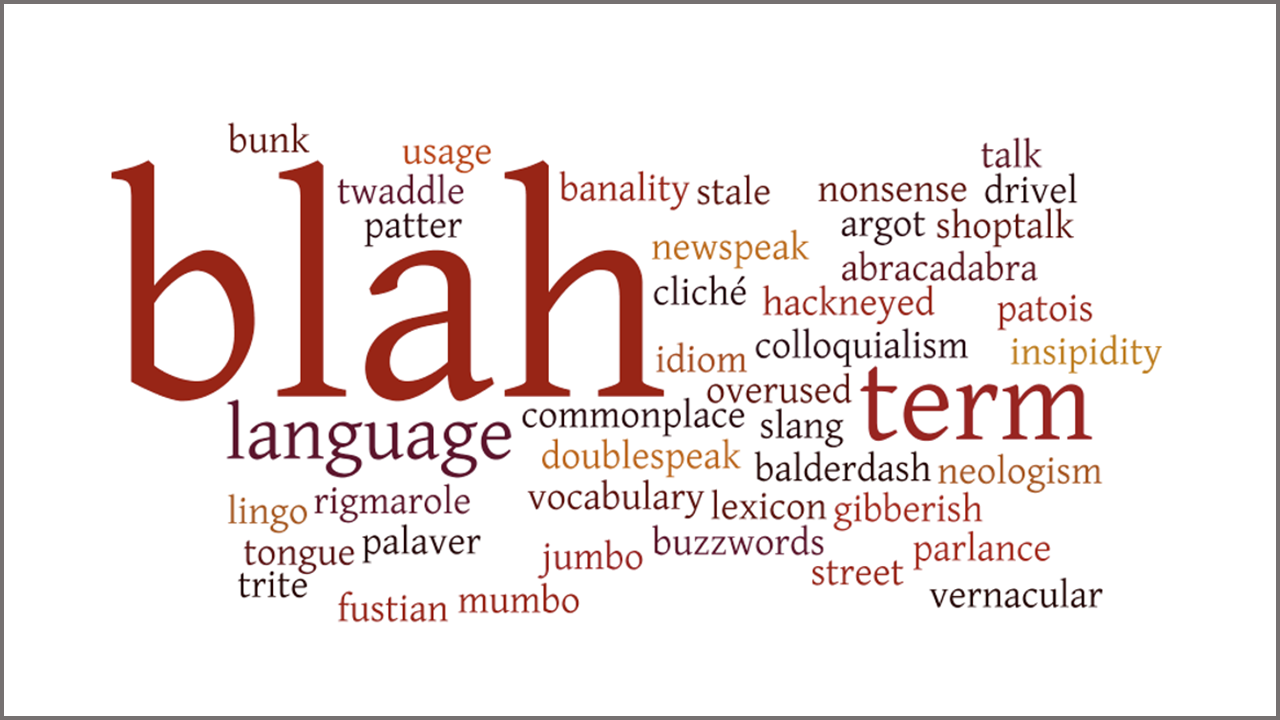Effectively communicating about complex topics like health, law, and finance requires that we think about what we know and who else needs to know it. The problem arises when we stop the process after verifying our knowledge—and without getting to the reader’s needs. It happens because experts often conflate communicating accurately with communicating clearly. But they’re not the same.
In this engaging interview, Ben Riggs confronts the assumptions that lead to unclear communication and shows us the empathy that we should have for readers facing life-changing decisions. Read on for Ben’s lessons in plain language and health communication through storytelling.
What is your role and how is it connected to clear communication and plain language?
I serve as Kettering Health’s senior communications specialist. We’re a health system of 15 medical centers, more than 120 healthcare facilities, and roughly 15,000 care providers and employees supporting the health and well-being of communities throughout western Ohio.
I get to work alongside wordsmiths and strategists to champion patient and employee stories; convey clinical advancement and innovation; cultivate employee culture; and connect readers to our services. Amid that flurry of language and stakeholders, I try to offer as much quality assurance to our teams and the departments we support as I can through editorial expertise, writing coaching, and consultation.
We have a lot of writing going out our door: PR-writing, marketing copywriting, social media, short-form patient education, long-form narratives, and features, etc. Success, and the editorial commitments it requires, certainly varies. But the commitment they share is that they must be clear for their intended readers.
Clarity is the lynch pin of effective communication. It’s ultimately what enables us to instill confidence in readers. At the end of the day, that’s what’s at stake: a reader’s confidence. Readers aren’t static. Whether it’s a prospective patient or an employee, they’re asking Kettering Health some form of “Can I trust you with my money, my plans, my family, my dreams—my health?”
Clear communication—and the plain language it enables—helps us answer with “Yes, you can.”
What prompted your interest in clear communication?
Writing always had this gravitational pull on me. Growing up, I punched keys on my mother’s typewriter and asked for one for Christmas when I was nine. She still has Sunday columns I wrote of our family’s weekend adventures. Later, after college, I put my interest (and minimal training) to use as a copywriter. Mostly website copy and blog posts. At first, I thought my lack of formal training would betray me.
So, I read books about and looked for examples of business and marketing writing in the wild. Most of what I read suffered from prosaic gangrene; it had zero blood supply, no sign of a human writing it, let alone any anticipation of a human reading it.
It turned out my minimal training was a strength. Because I hadn’t been apprenticed in the “language clubs” of marketing- or business-speak, “scale” still meant “grow”; “current state” meant “currently”; and “Our targeted funds for aligned, ongoing needs” (aside from sounding pompous) still, I think, meant “We’ve budgeted for that.”
I felt how isolating, frustrating, and confusing that language was. And even though clients anticipated it in the copy I delivered, they began to see the light of “What makes sense to you doesn’t make sense to most readers.” I even had a client tell me later, in a bit of an overshare moment, “You’ve helped me have conversations with my husband.”
It’s also why I use the phrase “human-reader” when I coach writers. Granted, on balance, it’s redundant. But I want to set the stage quickly with clients that every reader—regardless of expertise—needs and deserves writing that’s clear.
How does plain language impact healthcare outcomes and health literacy?
Clear communication—and the plain language that enables it—leads to confidence in readers. People make decisions primarily when they’re confident. And in healthcare, confidence arises not just from assuming the person in the white coat and stethoscope is an expert, but from knowing they have your best interest in mind. You can’t know that if you’re wading through clinical jargon without the help translating it.
The same is true when we read. Imagine you’ve found a condition webpage. And just after you click through, you’re bombarded by cumbersome blocks of text and long sentences with parades of multisyllabic words (like this one). It’s not enjoyable. It’s not helpful. And it leads to frustration, isolation, and intimidation: all experiences that work against instilling confidence.
Now, that’s not to say topics like conditions can’t be complex. Much of healthcare is. But there’s a difference between complex and complicated. And plain language is the litmus test between the two.
The truth is, regardless of reading level, readers are smart. But they’re not all experts. A reader will stick with an article plainly explaining a complex topic because there’s personal incentive to understand. But a reader will hit the eject button at the first (maybe second) sign of complicated prose.
I think we forget this much of the time as we develop health articles, condition pages, and health libraries. The Orwellian dynamics of SEO and algorithms notwithstanding, readers arrive at a condition page or health article personally incentivized. Their health, or someone else’s, is on the line.
Plain language is how you invest in that incentive; overly complicated prose is how you tax it. And we underestimate how exorbitant that tax is.
What are some factors that indicate a need to write in plain language?
One is literacy—the words, patterns, and rules of language that are intuitive to a person. We think of literacy as one’s ability to read and write. And it’s true. But it doesn’t capture literacy in a functional sense: how we see it used in everyday life.
I like to think of literacy as (to borrow from philosophy) one’s linguistic worldview. We build mental scaffolding that we later use to support our take on the world, and much of that gets built through the language we’re taught and the language we’re taught with.
Put another way, we move through the world using language like a dog uses its nose: taking in information, making sense and meaning out of it, and determining our reaction or response to it. As we do that, we orient ourselves to others and the world around us.
I’ll continue the metaphor, then, with respect to plain language. Unless readers are familiar with the “scent” of an industry’s jargon, when they read a memo or webpage or instructions full of words they’re unfamiliar with, it’s similar to a dog trying to smell a tree with a stuffy nose: the scent may be there, but it’s obstructed.
Plain language helps improve the likelihood that most readers will “pick up the scent” of your sentences and follow along.
Another is empathy. Readers are emotional creatures—hard stop. That doesn’t mean readers’ emotions are always getting the better of them. But it does mean emotions play an unavoidable role in how we relate to, process, and understand language.
Think of a time you were anxious or angry. And then maybe a partner or coworker said something to you that, in any other moment, would have been easy to respond to. But, in this moment, you asked them to repeat themselves. The words they used were fine. But your literacy took a hit because of what experts call the “cognitive load” of your emotions.
Your “average reader” may have a particular literacy rate. But don’t forget to consider how one’s emotions affect literacy.
Many professions (i.e., law, medicine, finance) are gatekeepers of important information for the public. What obligations do professionals have to communicate in plain language?
Professionals occupying roles within industries such as law, medicine, finance, and politics set up their offices next door to people’s dreams, hopes, and concerns. Their job titles have almost intimate proximity to others’ everyday lives. So, their obligation to clear communication is non-negotiable.
Plain language is what their customers, stakeholders, and clients need. And this requires professionals to slow down and not assume they’ve been clear. It’s important to know what you want to say. But it’s vital to know what you have said and how you’ve said it.
What’s the most important—yet simple—change medical professionals can make to public-facing documents to improve understanding?
Acknowledge that accuracy and clarity are sold separately.
A lot of professionals—clinical or otherwise—assume they’re clear because they’re accurate. That’s not to pit those against one another. You can be clear and inaccurate all the same. However, it’s important that medical professionals doing any public writing know that accuracy and clarity result from two distinct processes.
While both require processes of decision-making, the first is shaped by decisions involving verification and approval to answer the question “Is this correct?” The second is shaped by decisions involving drafting and rewriting to answer the question “Is this clear?”
It's true that ornithological specimen of identical plumage invariably conglomerate to the nearest proximity.
It’s also true, and more readable, to say birds of a feather flock together.
Learn to answer the questions “Is this correct?” and “Is this clear?”
Roy Peter Clark, author of numerous writing books including Writing Tools, wrote a great essay looking at the principles of plain language (what Roy calls “civic clarity”) used by former Surgeon General Jerome Adams at a press conference during the early days of the pandemic. I recommend it to anyone.
Beyond writing with simpler words and shorter sentences, what else can professionals do to communicate better for the public’s benefit?
- Value white space. White space offers the same mental break a period does, but for a paragraph or section of copy. Readers see the visual cue that the words surrounded by white space belong together, and it helps readers hang onto those ideas as they move to the next paragraph.
- Leverage shorter paragraphs. Like shorter sentences, shorter paragraphs slow a reader’s pace, which helps them collect and process information. And for the writer, writing shorter paragraphs forces brevity, helping them select words to keep and cut.
Clear writing is as much a product of what a writer cuts as it is what a writer keeps. The last thing a writer wants to do is force brevity through a process of compression, the attempt to shoehorn every idea from one paragraph into a shorter one.
What’s one piece of advice that you would offer to help a medical professional start using clear communication?
Cultivate the ability to translate your expertise.
Learn how to translate your expertise and competency into everyday language. Medical professionals, especially those with specialties, live and breathe the language of their field. Over time, they can forget that the habits of thought and language that became second nature to them are not intuitive for others. In which case, when miscommunication happens or there’s confusion, the typical strategy is to “dumb it down,” so to speak, which typically amounts to saying the same thing but slower.
The solution isn’t to “dumb it down” but to “translate it across”: How can you say the same thing but with different words, phrases, idioms, etc.? And, as happens with translating one language into another, it may be that you can’t create a word-for-word translation.
When I interview an expert in any field, including medical professionals, I always ask him or her, “If you were explaining this topic to a second-grade student, how would you do that? What would you say? What examples could you give?”
Having answers to those questions can be a big help.
What’s the most convincing statistic that you can share to convince medical professionals to start using clear communication?
Nearly half of U.S. adults have difficulty reading a book written at an 8th-grade reading level, which is roughly the age range most popular fiction is written at. So, if you’re communicating above the prose of The Hunger Games or Lord of the Flies, you’re over their head.
Beyond that, though, I’d offer that 100% of people want to feel safe and confident.
About Ben Riggs
Ben Riggs is a writing coach and author of the book Tell Them a Story. He lives in Dayton, Ohio, with his wife, Emily, and black lab, Lewie. He believes everyone should own a copy of On Writing Well.
Plain Language and Clear Communication Interview Series
This interview is part of a series produced in connection with WordRake’s support for the Access for All: Plain Language is a Civil Right conference. WordRake is editing software for sophisticated writers who must communicate clearly. It improves writing by simplifying and clarifying text, cutting jargon, and recommending plain English replacements. WordRake runs in Microsoft Word and Outlook, and its suggestions appear in the familiar track-changes style. You decide when to run WordRake and which edits to accept, so you get quality and speed without sacrificing control. Editing for clarity and brevity has never been easier. Try WordRake for free for 7 days.








